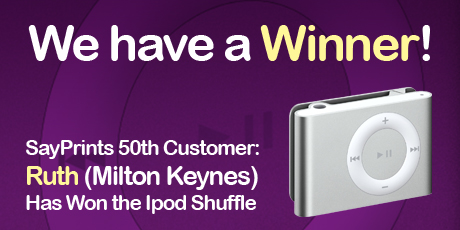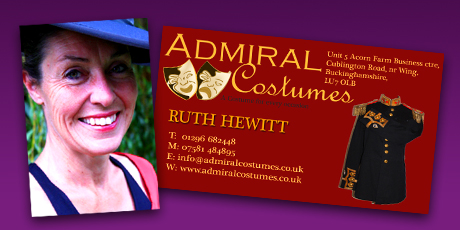
On Friday 16th Sept 2011, SayPrint had its 50th Customer.
Ruth from Milton Keynes won an apple ipod shuffle.
Ruth visited the site on recommendation of a friend to order some business cards for her costume hire business, Admiral costumes. Like many of our customers Ruth was looking for a good quality service and great prices. Once SayPrint had checked the figures we called Ruth and offered her a variety of colours for the ipod, After Ruth choose lime green we packaged the ipod and business cards and sent them off. We recieved this back from Ruth ” Thank you so much, both items arrives safely yesterday and I am absolutely thrilled with both”. Like many of our customers Ruth is starting a new business and uploaded her own design to our website. Ruth’s business has just launched a user friendly website offering an amazing selection of costumes to browse. We would like to Congratulate Ruth on being our 50th Customer and we look forward to Customer 100 who will be winning an Ipod Nano worth over £130. If you would like to visit Ruths business click here Or like them on Facebook Here.



